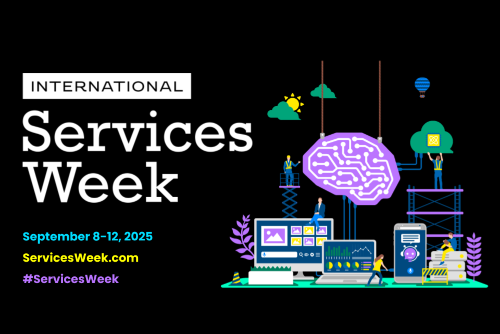Pragmatic AI for services delivery: What is it and how do I use it?

In the ever-changing world of services business, few would deny that leveraging the power of Artificial Intelligence (AI) has become crucial for staying competitive and efficient. The integration of AI into core operations, like services delivery and resource planning, can significantly transform how organizations operate. Enter Pragmatic AI–a game-changing approach that minimizes uncertainty and risk associated with AI adoption. As too many AI projects turn into long-running “experiments” or projects without actual business outcomes, Pragmatic AI’s first principle is that it “Drives Action”.
What does that mean in practice? Let’s dive into some real-world use cases that showcase how Pragmatic AI can empower services delivery leaders and resource planning directors to achieve new levels of operational efficiency through recommended actions. That means productive teams, happy consultants, successful projects, and delighted customers without the need for expensive data scientists or the delay of long research projects.
1. Enhanced resource allocation
In a fast-paced business environment, services leaders often grapple with identifying potential risks and taking timely actions to mitigate them. Pragmatic AI equips them with proactive recommendations to address these challenges. By leveraging curated datasets and closed-loop AI models, the platform can analyze historical project data, customer interactions, market trends, and other relevant factors. This enables the system to identify subtle patterns that human analysis might miss and make concrete suggestions for the next steps. For instance:
USE CASE: A leading IT services company has a major project deadline approaching, representing a material level of business for the quarter. Pragmatic AI analyzes past project performance, customer feedback, team dynamics, and external factors like industry trends. The AI model identifies potential bottlenecks, resource allocation issues, and even potential client dissatisfaction points. Based on these insights, services leaders can take proactive measures to reallocate resources, adjust project timelines, and communicate transparently with clients, ensuring project success and client satisfaction.
Sounds good, right? But wait, there’s more.
2. Improving services margins and efficiency
Services leaders constantly seek ways to optimize service delivery while maintaining healthy profit margins. Pragmatic AI can be a game-changer in this regard by enabling data-driven decision-making at every step. Through its end-to-end platform for financial and operational data, Pragmatic AI can identify inefficiencies, predict areas of improvement, and even recommend pricing adjustments. Here’s an example:
USE CASE: A consulting firm offers various service packages to clients. By utilizing Pragmatic AI, the resource planning director gains insights into which service offerings have the highest profit margins and which ones traditionally provide lower margins. The AI model analyzes historical data on resource allocation, time spent on each project phase, and associated costs. It then suggests adjustments in resource allocation, project timelines, or pricing structures. As a result, the firm can optimize its services mix, focus on high-margin offerings, and eliminate bottlenecks, leading to improved profitability.
Where do the finances come in? I’ll tell you.
3. Accurate cash flow forecasting
For finance leaders, accurate cash flow forecasting is essential to make informed decisions, plan for the future, and keep the lights on. Pragmatic AI’s ability to predict cash flow patterns based on historical data and market trends can provide a significant advantage. This predictive capability enables leaders to make confident decisions and allocate resources effectively:
USE CASE: A software development company relies on steady cash flow to manage its operations. Pragmatic AI analyzes past payment patterns, client behaviors, economic indicators, and other relevant data. The AI model forecasts potential delays in payment and identifies clients who might extend their payment schedules. Armed with this information, the finance leader can implement targeted communication strategies to expedite payments or allocate resources accordingly, ensuring a stable, predictable cash flow.
Being pragmatic
Pragmatic AI brings a new era of efficiency, accuracy, and confidence to services leaders–empowering them to make decisions and take action with certainty. By leveraging curated datasets, AI models, and expert support, organizations can unlock hidden insights, predict trends, and make informed decisions that drive growth and streamline operations. Whether it’s proactively managing risks, optimizing services margins, or forecasting cash flows, Pragmatic AI proves to be a powerful ally in achieving success in today’s data-driven world. As Certinia continues to invest in its AI roadmap, the possibilities for innovation are limitless!
Recent Articles
Maximize your Salesforce investment with Certinia






